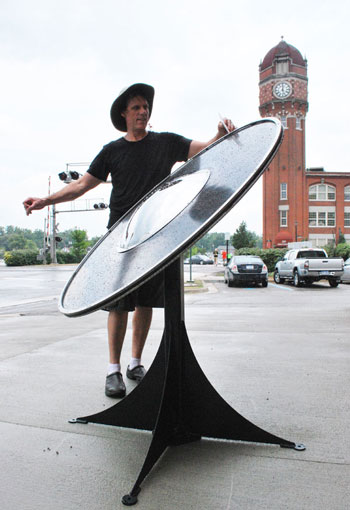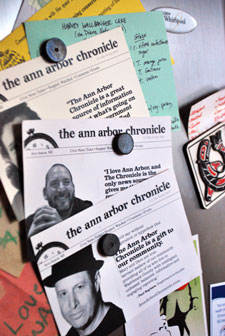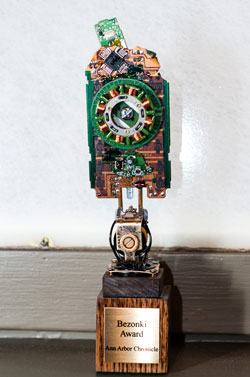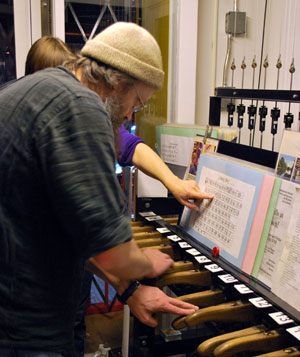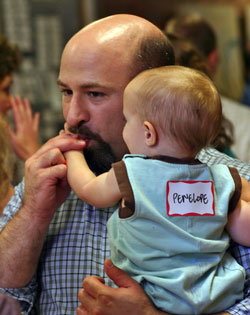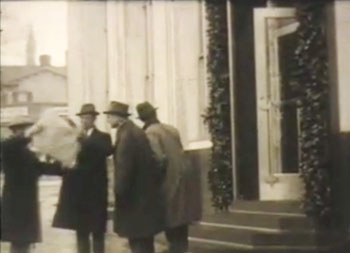Milestone: A Pitcher Worth 1,000 Words
The monthly milestone column here at The Ann Arbor Chronicle provides a regular, systematic way to express our appreciation to readers and advertisers for their financial support. That support was strong enough to sustain the publication through its fifth year in operation. Thank you.

Pitcher passed at the Old Town Tavern on Jan. 1, 2014 for the annual Townes Van Zandt memorial show performed by Chris Buhalis – on the anniversary of Van Zandt’s death, now 17 years ago. (Photo by the writer.)
As we flip the calendar to a new year, the regular milestone column is also a chance to remind readers: To sustain itself, the business really does rely in part on “voluntary subscription” dollars.
The Chronicle’s continued ability to document local government and civic affairs depends on you and it depends on you now – not on someone else at some other time. So I’m asking you to think right now about using the online system or the old-fashioned check-in-an-envelope method to make a financial contribution to The Chronicle: Subscribe!
As a reminder, in case we don’t write a column about this in some given month, I’ve added a recurring monthly item to our event listings for the second day of every month: Time to Contribute Financially to The Ann Arbor Chronicle.
It’s worth pointing out that The Chronicle’s event listings are pretty extensive, and currently include somewhere around 15,000 local events. That’s made possible through the work of Jon Udell as part of his Elm City Project. Granted, 15,000 events might sound a bit overwhelming, but we have begun categorizing them into smaller mini-calendars that some readers might find easier to parse.
One of the regular events you’ll find listed in The Chronicle’s event calendar is live music every Sunday night at the Old Town Tavern. Customary at the Old Town, after the band has played its set, is for someone to carry around a pitcher to collect up money for the musicians. It’s somewhat like a secular version of passing the collection plate at a worship service in the Christian tradition.
When someone is holding the pitcher out in front of you, that’s the time you are called upon to act – not later.
So I’d like you to think of this month’s column as the Internet-equivalent of passing the pitcher for The Chronicle. Below the fold, I’m going to beat briefly (I promise) on this same drum. So if you’ve made a recent contribution, you should feel free to imagine that the pitcher has moved on to the next table. [Full Story]






